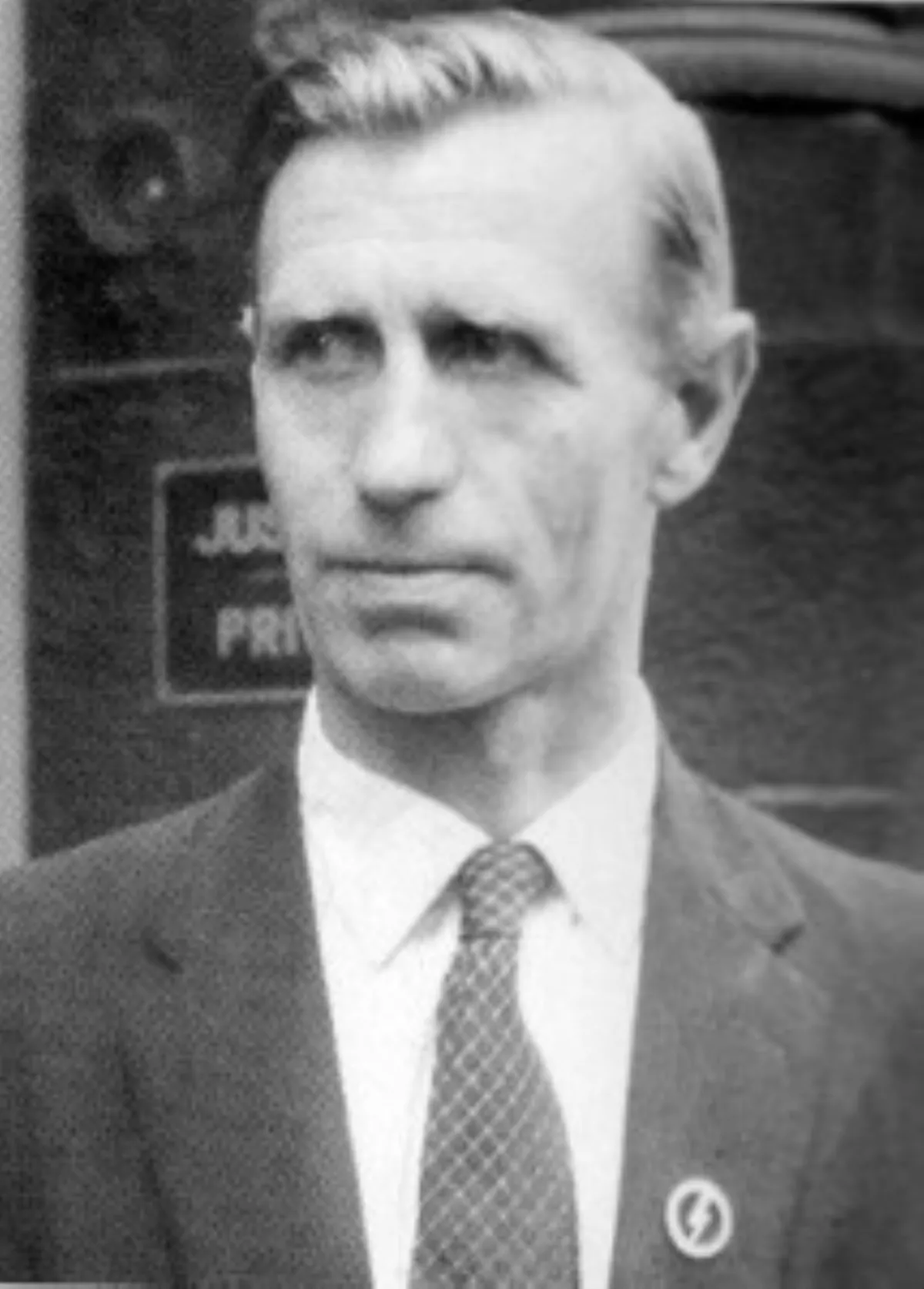 1.
1. Edward Jeffrey Hamm was a leading British fascist and supporter of Oswald Mosley.

Jeffrey Hamm was born in Ebbw Vale, Wales, whilst his father was serving in the First World War.
Jeffrey Hamm joined the BUF in 1935 when he relocated to London to take up a teaching role at King's School, Harrow.
Jeffrey Hamm was transferred to Leeuwkop, South Africa, where he was involved in an attempt to tunnel out of the camp.
The camp contained some German Nazi prisoners, and a contemporary MI5 report suggested Jeffrey Hamm had been indoctrinated by Nazi propaganda by his fellow inmates.
Jeffrey Hamm was returned to Britain in 1941 and enlisted in the Royal Tank Regiment, but during his service, he was identified as a disruptive influence and was taken off the front before his discharge in 1944.
Jeffrey Hamm found work at the Royal Coach Works in Acton after his discharge, and he subsequently was a bookkeeper at a milliner shop.
Around then, Jeffrey Hamm converted to the Roman Catholic Church under the influence of Father Clement Russell, a Nazi sympathiser and anti-Semite based in Wembley who kept a photograph of Mosley on display in his parochial house.
Jeffrey Hamm had been a minor figure in the BUF, but his time in the prison camps had increased his support for Mosley.
Indeed, such had been his low standing in the movement that Mosley did not know who Jeffrey Hamm was and for a time struggled to spell Jeffrey Hamm's surname properly.
Nonetheless, Jeffrey Hamm quickly became the most vigorous and vocal of Mosley's post-internment supporters.
Jeffrey Hamm's League rallies eventually began to attract thousands, which convinced him that a proper political return was a distinct possibility.
Jeffrey Hamm's rallies attracted significant opposition, with clashes between his supporters and antifascists.
However, the group's first public campaign actually took place in the Metropolitan Borough of Hampstead, where, with Jeffrey Hamm having become associated with Eleonora Tennant, it helped to organise a petition to keep immigrants out of new houses, ostensibly on the pretext that the housing should be kept for returning soldiers.
Jeffrey Hamm's increasing profile did not go unnoticed by both supporters and opponents, and in 1946, he and his ally Victor Burgess suffered a severe beating from antifascists.
Jeffrey Hamm soon began calling on Mosley to return to the leadership of British fascism.
Jeffrey Hamm incorporated his British League into the Union Movement immediately upon the latter's foundation in 1948.
Jeffrey Hamm became a leading member of the new UM but was considered a spiky figure and was so unpopular at UM headquarters that Mosley sent him to Manchester in 1949.
Jeffrey Hamm failed to revitalise the northern branch and contemplated leaving the UM altogether until he was recalled by Mosley in 1952.
Jeffrey Hamm gained widespread press coverage when, in the immediate aftermath of the 1958 Notting Hill race riots, he made a speech outside Latimer Road tube station.
Jeffrey Hamm served as Mosley's personal secretary during the later years of the UM and succeeded to the post upon the death of Alexander Raven Thomson in 1955.
Mosley was officially UM leader until 1973, when he formally retired, and Jeffrey Hamm, who had become the effective leader, formally succeeded him.
Jeffrey Hamm published his autobiography, Action Replay, in 1983, and in 1988 his second book, The Evil Good Men Do.
Papers of Edward Jeffrey Hamm are held at the Cadbury Research Library, University of Birmingham.